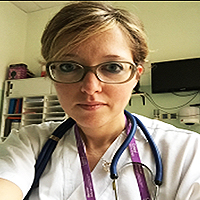Effects of Preoperative Training on Static and Dynamic Balance among Female Athletes with Injured ACL
Published on: 2nd October, 2024
Aims: The purpose of this research was to study the effects of preoperative training on static and dynamic balance among female athletes with injured ACLs. Methods: This semi-experimental study involved a 2-group pretest-post-test design. Subjects were 36 (19 control and 17 experimental) female athletes with injured ACLs, that were chosen with the available sampling method. The experimental group did the preoperative training in the eight weeks and the control group did not participate in any training program during this period. Static and dynamic balance and lower body muscle strength were measured. The paired sample T-test was used to compare pre and post-test results and the independent sample T-test achieved comparisons between the two groups. Results: The results indicated that static (with eyes opened and closed) dynamic balance and muscle strength were improved significantly (p < 0.05) in the exercise group, but no significant change (p > 0.05) was found in the control group. Also, significant differences were found in improvement changes results between the two groups (p < 0.05). Conclusion: Results of the study confirmed that preoperative training can have a beneficial effect on improving static and dynamic balance among female athletes with injured ACLs.
Transforming Cancer Care through Physical Exercise: A Path to Holistic Healing
Published on: 7th November, 2024
The role of physical exercise in cancer treatment is gaining increasing recognition as part of a holistic approach to patient care. Traditionally, cancer treatment has focused on surgical, hormonal, chemotherapeutic, as well as radiotherapeutic interventions. However, recent studies underscore the significant benefits of integrating physical exercise into treatment plans, not merely as a supplementary activity but as a core component of cancer care [1].
Relationship between Fertility Diet Score Index Items and Ovulation in Women with Polycystic Ovary Syndrome: A Narrative Review
Published on: 18th December, 2024
Polycystic Ovary Syndrome (PCOS) is a common endocrine disorder affecting women of reproductive age, characterized by ovarian dysfunction and a leading cause of infertility due to ovulatory issues. Lifestyle interventions, including dietary modifications, exercise, and weight management, are considered first-line therapies for women with PCOS; however, the optimal treatment remains unidentified. The Fertility Diet (FD), introduced in 2007, represents a dietary approach that may positively impact fertility by emphasizing specific micronutrients, dietary composition modifications, weight management, and increased physical activity. This narrative review aims to evaluate how various components of the Fertility Diet influence ovulation and overall fertility, assessed through a fertility diet score. The findings of this study suggest that adherence to the Fertility Diet, particularly higher intake of the monounsaturated to trans-fat ratio, and increased vegetable protein intake, may positively influence fertility outcomes in individuals with PCOS. In contrast, high consumption of animal protein and high glycemic load food may have adverse effects. However, the current evidence remains insufficient for definitive conclusions, warranting further interventional studies to explore this relationship.
The Police Power of the National Health Surveillance Agency – ANVISA
Published on: 27th December, 2024
The National Health Surveillance Agency (ANVISA) is a public institution created by Law 9782/1999, which integrates the field of Collective Health and acts in the prevention, control, and inspection of sanitary conditions in various sectors, such as food, health, pharmacies, hospitals, and commercial establishments. Its main objective is to guarantee the protection of public health, ensuring that products, services, and environments comply with established standards, to promote health and preventing diseases. To exercise its inspection and control function, Sanitary Surveillance has the power of sanitary police, which gives it the authority to apply necessary measures and curb practices that pose risks to the health of the population.The performance of the Sanitary Surveillance is fundamental to prevent health risks in any part of society and to guarantee national programs for patient safety. It is also essential to prevent diseases, control risks, and monitor compliance with health standards and specific regulations. The police power of Sanitary Surveillance consists of establishing norms and technical regulations, carrying out inspections and inspections, issuing temporary or permanent interdiction orders in establishments that do not comply with the norms, as well as forwarding complaints to the Public Ministry in cases of crimes against public health. Arrests carried out by Sanitary Surveillance agents are extreme measures and applied in serious situations of risk to public health or when there is repeated disrespect for sanitary regulations. The prohibited establishments have the right of defense and may seek to regularize the situation to obtain the release of activities.The performance of the Sanitary Surveillance has significant impacts on the prevention of disease outbreaks and epidemics. Identifying and correcting inappropriate practices helps to prevent the spread of pathogenic agents and reduce the risk of contagion in collective environments. The institution’s preventive and supervisory activities contribute to reducing risks to the population’s health, preventing disease outbreaks, food poisoning, and the proliferation of pests, among other problems. Finally, the importance of exercising police power with transparency, impartiality, and respect for individual rights is emphasized, always aiming at the collective interest and the promotion of the common good. In summary, Health Surveillance plays an essential role in protecting public health, seeking to ensure that the population has access to safe products and services, contributing to the improvement of quality of life and disease prevention.










